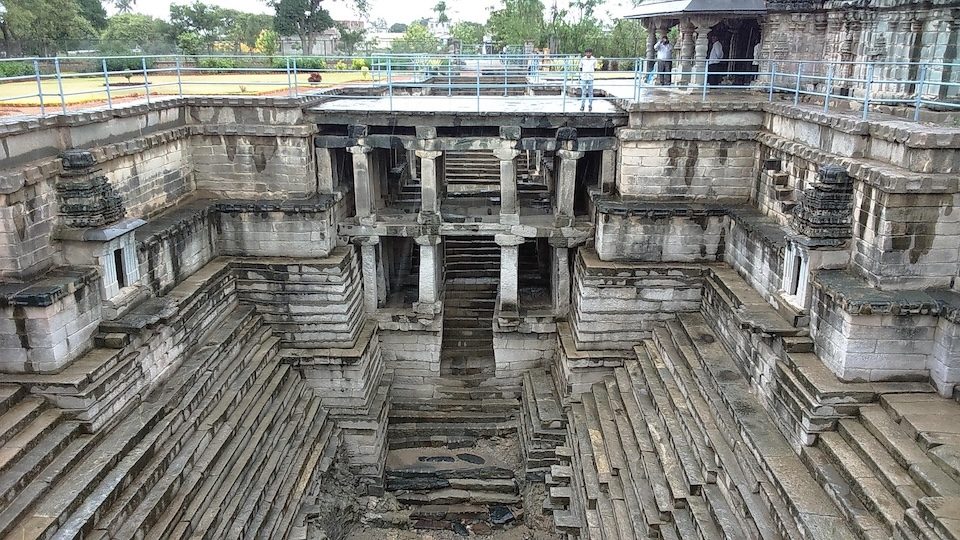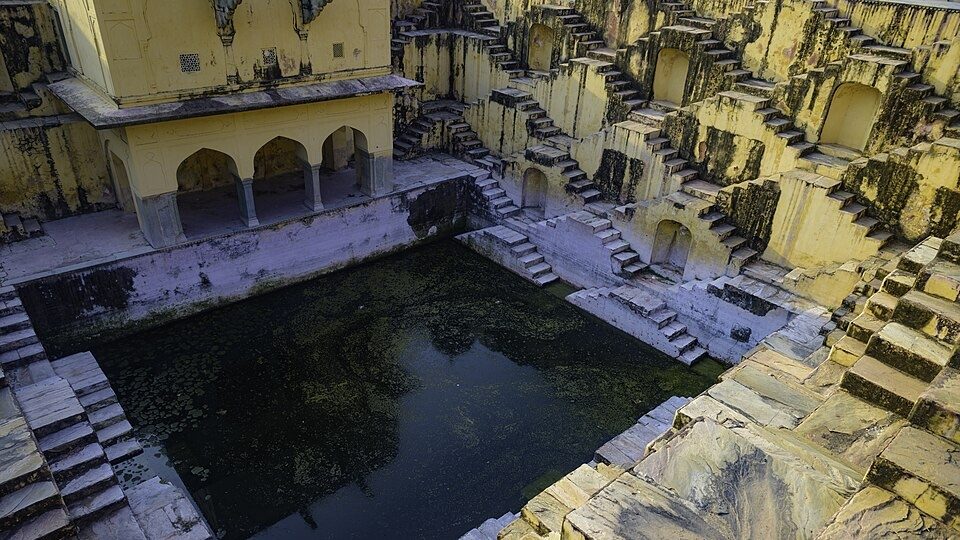



On the sunbaked plains and in the bustling towns of India, you’ll find a curious sight: stone staircases, elegantly stepping, spiraling, or zigzaging down into the earth. Some are ornamental and palatial; others are weathered and practical. They’re historic stepwells, known by regional names such as “baolis,” “vavs,” and “bawdis.”
Like all wells, stepwells are shafts that tap into the underground water table, sometimes drawing water year-round when aquifers are replenished by rainfall. Yet instead of using a pump or pulley to bring up water, people typically descended their steps, scooped up water in buckets from a small reservoir, and carried their heavy loads upstairs.
(There were some exceptions: some of the largest and most elaborate stepwells also used saqiyas or “Persian wheels,” where a bull or similar animal would walk in a circular path, turning a wheel with scoop buckets which lifted water to higher levels.)
Stepwells first appeared over a thousand years ago, when a growing population and unpredictable weather demanded creative solutions. They began as simple structures and evolved into the grander ones visible today, most of which date from the 6th Century CE onward. Their steps and levels helped make precious water available year round, whether monsoon rains filled the reservoir to its brim or the dry season caused it to drop way down.
Many also provided spaces where people could bathe, wash clothes and kitchen items, and tend to animals. Over time, special construction techniques separated these activities from drinking water sources to help prevent pollution.
These were social places as well. By guiding villagers, travelers, merchants, and farmers down out of the searing sun, some stepwells became communal meeting places, cool sanctuaries, and even spiritual sites.
Today, many ancient stepwells are in disrepair. Yet occasionally some have been revived, as sources of community pride and tourism or to once again provide access to water.
This story appeared in the October 2025 issue of High Sierra Droplets, our monthly newsletter.
Want to read more stories like this? Subscribe for free today!
